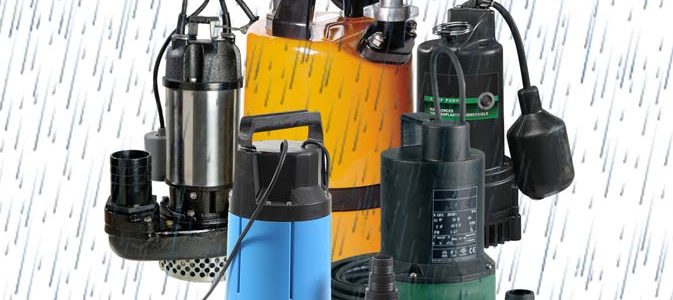Effective Sump Pump Features To Handle More UK Wet Days
“How effective is a sump pump to handle extreme flooding?” is a frequently asked question. A keen and growing interest in sump pump systems is not too surprising. The UK climate is “becoming wetter”, according to the State of the Climate UK Report, July 2019.
The Report reveals that the highest rainfall totals over a five day period were 4 per cent higher between 2008-2017 compared to 1961-1990. Also, the amount of rainfall on extremely wet days had risen by nearly a fifth (17 per cent) during the same period, plus a slight increase in the longest sequence of consecutive wet days. Of course, this was before the February 2020 storms, which broke UK rainfall records going back more than 250 years.
Consequently, the UK has become the third-largest importer of pumps in Europe (following Germany and Italy), accounting for more than 9 per cent of EU pump and parts production. At the same time, Britain also ranked third for producing over 10 per cent of the European pump market.
Article Chapters
Basement pump capability depends on working pressure
Across the UK, towns and villages near coastlines, rivers, low-lying areas or residential developments built on floodplains repeatedly face the brunt of extreme rainfall events. The capability of a basement pump to help protect a ground floor space, whether at a domestic property or business premises depends on its working pressure. The volume of water required to be removed is a major factor determining a pump’s output.
To ensure uninterrupted operation, minimum static inlet pressure is required at the pump suction port, known as the “minimum available net positive suction head” (NPSH). The necessary level pressure depends not only on the required net positive suction head (NPSHr) but also the temperature of the pumped liquid. The available inlet pressure will decrease as the flow through the pump responds to the velocity change of the liquid in the suction section of the impeller. The critical point is access into the impeller suction neck.
Sump pump automatic sensors for varying time and volume use
A trouble-free operation is also dependent on whether a varying volume of water is to be pumped. Parts of the UK increasingly face lengthening periods of intense rainfall at different times of the year, and not always limited to the autumn / winter months. However, a sump pump that is likely to be used at infrequent times should possess permanently attached electrode sensors to switch on and off automatically, which are more reliable than mechanical contact switches. A frequency converter, which controls rotation speed and torque of an electric motor to operate a load will also ensure a gentle start-up and prevent pressure surges if more than one sump pump is installed.
It’s also important for a sump pump to contain a dry-run protection feature. A pump motor can very quickly overheat if air, as well as water, starts to be pumped through at removal points where, in some instances, the water level is too low. Sump pumps are available for almost all ranges of capacity. The higher the range, so too, the higher the connected load needs to be, and with an appropriate on-site connection. Most pumps operate on a single 230V phase or 400V three phases.


Comments are closed.